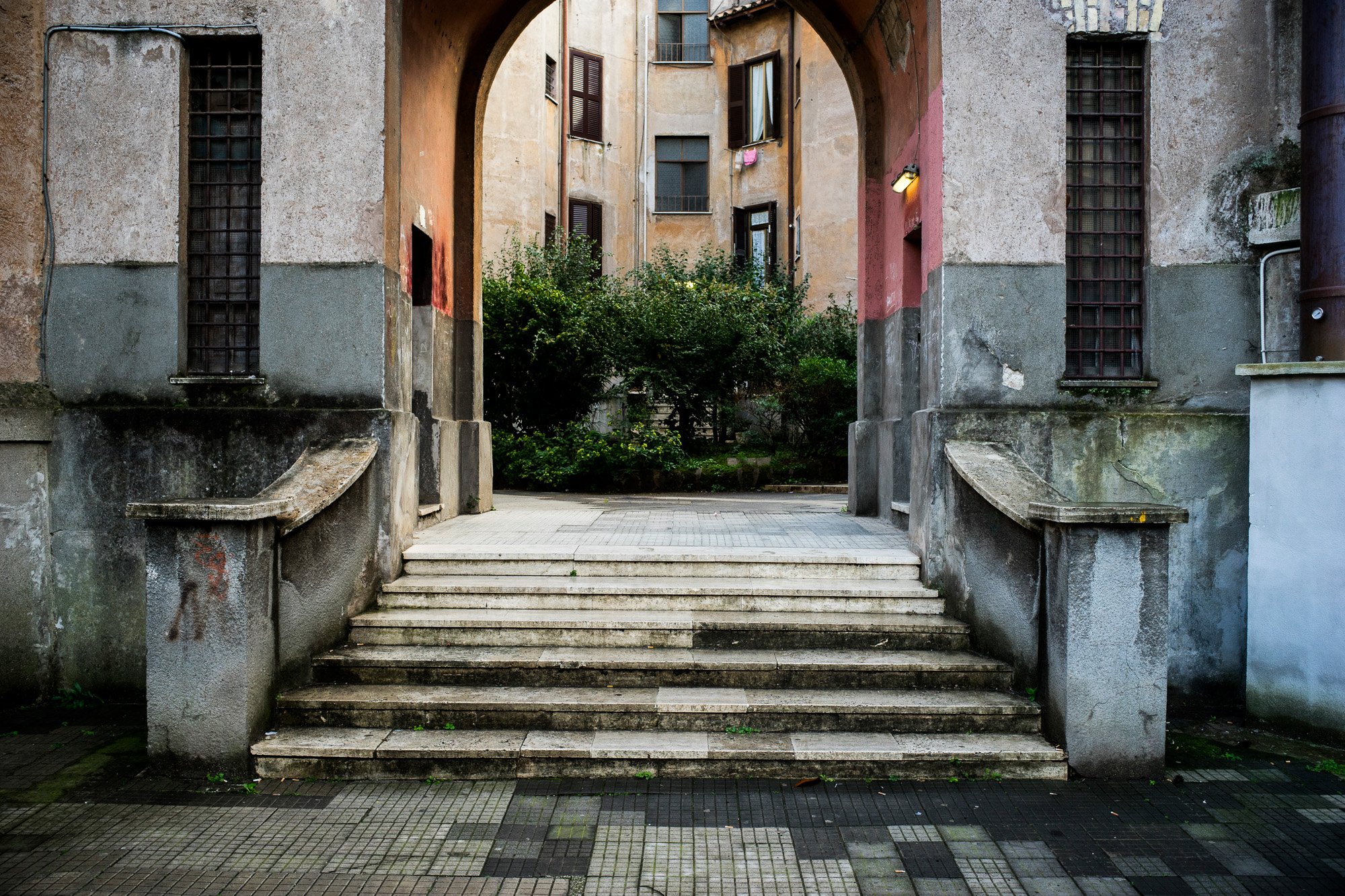LATIUM
Duce’s legacy
In November 2015, I was awarded a one-month residency at the Villa Medici in Rome to create a photographic project on the architectural legacy left by Benito Mussolini after his radical transformation of the city in the 1930s.
Like all totalitarian urban projects, Mussolini’s architectural ambitions served multiple purposes: to legitimize his rule by reviving the grandeur of the ancient past, to assert his authority through monumental constructions, and to shape a “new human ideal”—one defined by strength, purity, and devotion to the state’s imperial ambitions. The dictator’s thirst for domination, war, and grandeur remains visible today in Rome’s vast traffic lanes, imposing buildings, and sprawling activity centers, still used by Romans in their daily lives. It is this continuity between past and present that I sought to capture.
This connection extends beyond Rome, particularly in Latina, one of the “new towns” built during the same period. While Rome was a grand project in itself, it also served as a laboratory for Mussolini’s vision of urban planning—a vision that sought to mold cities from scratch, transforming once-uninhabitable marshlands into structured, ordered environments. These towns were designed to host a new type of society, shaped in the image of the Duce.
Today, places like Latina, Pontinia, Sabaudia, Alghero, Aprilia, and Foggia stand as remnants of both an economic and social failure. Colonized in the 1930s by northern Italian settlers—workers to drain the swamps, farmers to cultivate the reclaimed land, and fascist officials to govern them—these towns saw a second wave of immigration in the 1960s, when rapid industrialization attracted a southern Italian workforce. But just twenty years later, the decline of these industries was as sudden as their rise, leaving these urban centers—once meant to glorify fascist power—abandoned by the state, victims of economic relocation and deindustrialization.
A third wave of immigration followed, this time from foreign populations. In recent years, fueled by nostalgic rhetoric from the original settlers, nationalism has surged in these towns, bringing the far right into power in several municipalities. Combined with the influence of organized crime, which some claim to be even more powerful than Rome’s syndicates, these elements have paved the way for the rise of neo-fascist movements in the region.
















